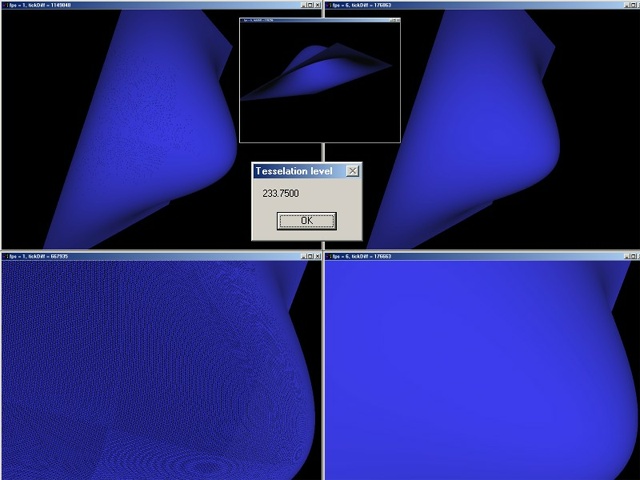 |

Submitted by , posted on 26 July 2001
|
 |

Image Description, by

After seeing Tom Nuydens' (www.delphi3d.net) demo I
decided to try a little bezier patch programming for myself to see how fast it
was.
The program creates a lump comprised of 4 patches which all use the same level
of tesselation per edge which can be varied from 2 upwards. As you can see in
the message box above, the level of tesselation was 233.75 sections per edge.
The nVidia evaluators allow different tesselation levels per edge but I'm not
that advanced yet.
The 2 left images show a wireframe view of the lump, while the 2 on the right
show the filled version. If you can't read the numbers, the rendering in
wireframe was running at 1 fps and filled was running at 6 fps, as the program
uses no optimisation whatsoever, and reevaluates the patches every frame, this
is quite good for rendering with back and front faces enabled. The second
number is the difference in ticks from the performance counter from the last
frame.
The program uses OpenGL for rendering, DirectX for input, and is running on an
Athlon 1.2Ghz with 196Mb of RAM and a 64Mb GeForce2 MX.
Please don't email me asking about the patch evaluation as I copied the lines
for rendering a patch from Tom's demo and have not had a chance to investigate
what all the parameters in the call to glMapControlPointsNV( ... ) mean.
Brett Gillick aka Shabadoo
|
|

